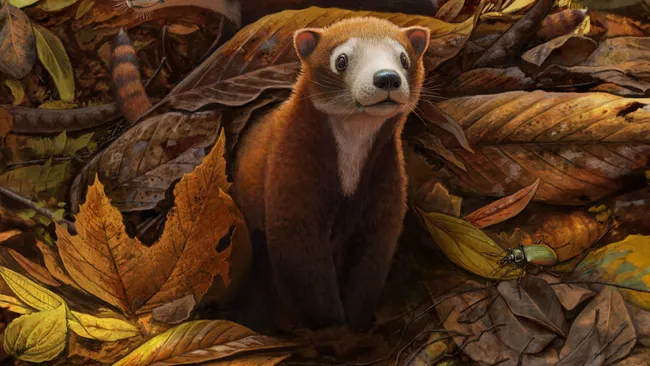Researchers in Colorado have unearthed the fossilized skull of a tiny mammal that roamed the area around 65 million years ago, shortly after the extinction event that wiped out nonavian dinosaurs. This newly identified species, named Militocodon lydae, resembled a chinchilla in size and appearance but is more closely related to modern hoofed mammals like cows, deer, and pigs.
M. lydae provides valuable insights into how mammals diversified and evolved following the Cretaceous-Paleogene (K-Pg) mass extinction event 66 million years ago. Tyler Lyson, curator of vertebrate paleontology at the Denver Museum of Nature and Science, emphasized the significance of this discovery, noting that fossil records from this period are sparse. “The discovery and description of a fossil mammal skull is an important step forward in documenting the earliest diversification of mammals after Earth’s last mass extinction,” Lyson said.
Documented in a study published on April 30 in the Journal of Mammalian Evolution, M. lydae lived approximately 65.43 million years ago during the Paleocene epoch (66 million to 56 million years ago), roughly 610,000 years after the mass extinction event. The team identified M. lydae from skull and jaw fossils collected in the Corral Bluffs area near Colorado Springs in 2016 and 2020.
The genus name, Militocodon, honors Sharon Milito, a museum volunteer and retired teacher who discovered the first specimen in 2016. The species name, “lydae,” honors Lyda Hill, an investor and philanthropist supporting the Denver museum’s post-K-Pg recovery research. Using high-resolution X-rays, the team created 3D reconstructions of the fossils for detailed analysis.
M. lydae is classified within the Periptychidae family, known for its distinctive teeth. The teeth of M. lydae exhibit evolutionary characteristics that place it between the more ancestral Mimatuta genus and the more recent Oxyacodon genus. This intermediate position helps researchers understand the evolutionary trajectory of early periptychids.
Although much remains to be learned about periptychids and other Paleocene mammals, M. lydae serves as a crucial link in understanding the adaptive and evolutionary responses of mammals following the extinction of the dinosaurs.
